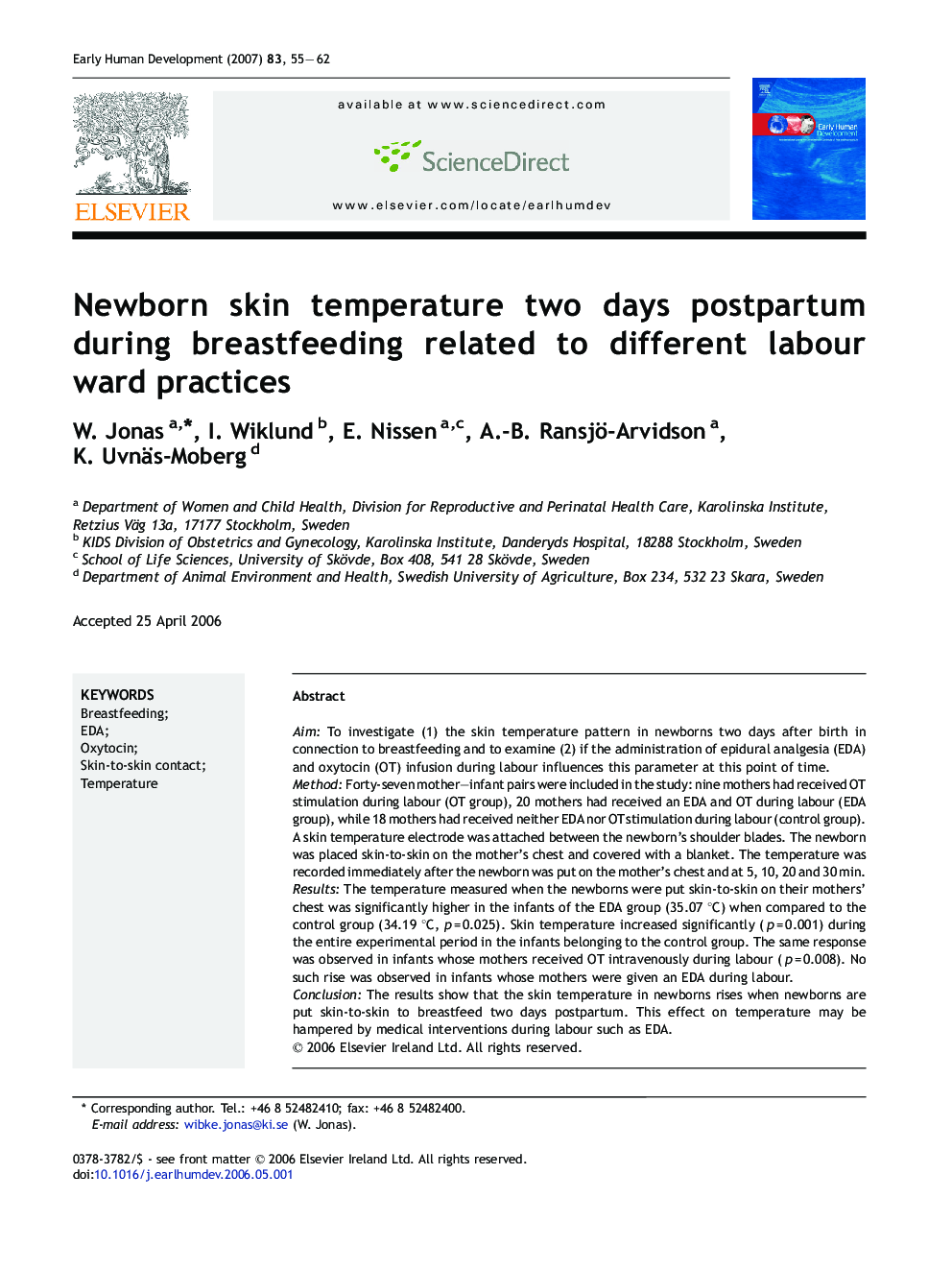| Article ID | Journal | Published Year | Pages | File Type |
|---|---|---|---|---|
| 3918648 | Early Human Development | 2007 | 8 Pages |
AimTo investigate (1) the skin temperature pattern in newborns two days after birth in connection to breastfeeding and to examine (2) if the administration of epidural analgesia (EDA) and oxytocin (OT) infusion during labour influences this parameter at this point of time.MethodForty-seven mother–infant pairs were included in the study: nine mothers had received OT stimulation during labour (OT group), 20 mothers had received an EDA and OT during labour (EDA group), while 18 mothers had received neither EDA nor OT stimulation during labour (control group). A skin temperature electrode was attached between the newborn's shoulder blades. The newborn was placed skin-to-skin on the mother's chest and covered with a blanket. The temperature was recorded immediately after the newborn was put on the mother's chest and at 5, 10, 20 and 30 min.ResultsThe temperature measured when the newborns were put skin-to-skin on their mothers' chest was significantly higher in the infants of the EDA group (35.07 °C) when compared to the control group (34.19 °C, p = 0.025). Skin temperature increased significantly (p = 0.001) during the entire experimental period in the infants belonging to the control group. The same response was observed in infants whose mothers received OT intravenously during labour (p = 0.008). No such rise was observed in infants whose mothers were given an EDA during labour.ConclusionThe results show that the skin temperature in newborns rises when newborns are put skin-to-skin to breastfeed two days postpartum. This effect on temperature may be hampered by medical interventions during labour such as EDA.
